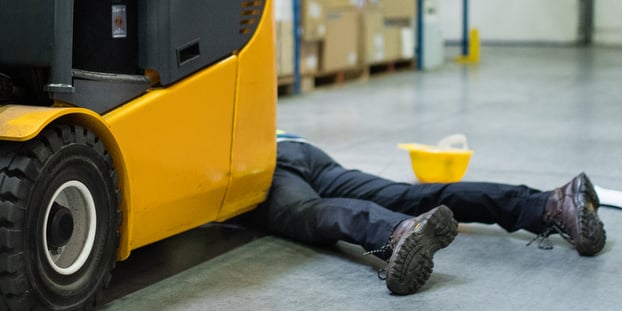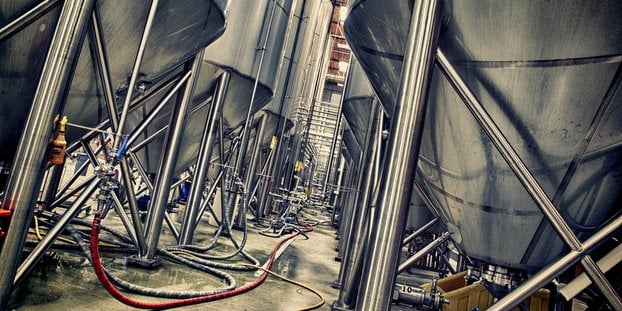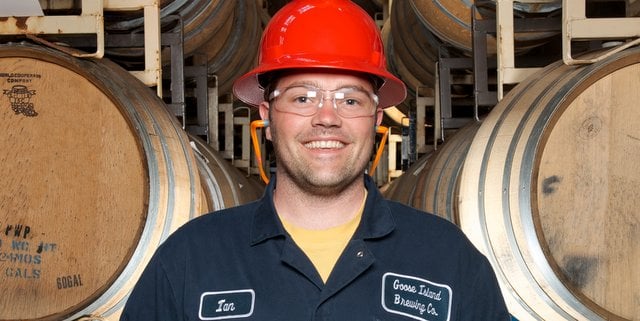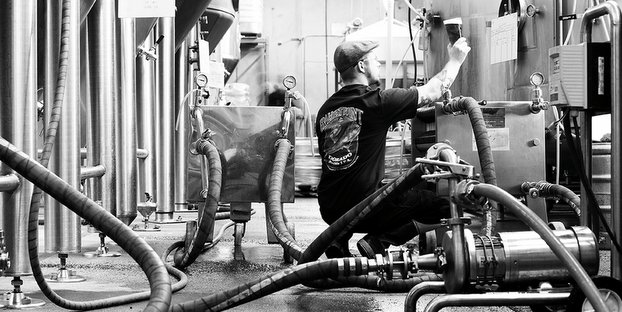
The weather is getting warmer and most of us are ready to clock out early and hit the patio to enjoy a seasonal beer or two. What we might not want to think about is the spring cleaning we have to do (or rather, should do) to keep our breweries offering not only topnotch brews, but the best customer and employee experience.
Housekeeping and the safety checks that should come along with it are critical to operating a safe brewery and producing quality beer. In fact, brewery employee safety is the focus of a panel this week at the Craft Brewers Conference in Nashville: The Taproom, Brewpub & Kitchen Safety Roundtable. I’m happy to be participating.
Consider the hazards and potential effects. Burns from boiling liquid. Explosions from overpressurized vessels. Slips on wet floors. Forklift accidents. These are just a few examples of the dangers that go hand-in-hand with operating a brewery. A spring cleaning plan that addresses the safety of your brewery and its employees can go a long way toward mitigating many of the risks that come from running a business that deals with complex equipment and chemical sanitizers.
Forklift accidents
Many breweries use forklifts and pallet trucks. Forklift fatalities are perhaps most common in the construction industry, but they happen at breweries too. According to the Occupational Safety and Health Administration, there are nearly 100,000 forklift-related accidents each year resulting in about 85 deaths. Some of the biggest hazards for employees are overturning forklifts, being struck by a forklift or a falling load or getting trapped in the mechanisms of the forklift. In 2013, for example, a 27-year-old man was killed in a forklift accident at a brewery in California after the machine rolled.
OSHA estimates that nearly 70 percent of forklift accidents can be prevented through protective measures like driving slowly, proper maintenance and operator certification. Breweries should have a forklift procedures plan in place that ensures driver and worker safety based on OSHA guidelines.
Chemical sanitizers and confined spaces
Breweries also present another hazard for workers who have to enter tanks, which are confined spaces. Every brewery should have a confined space entry procedure manual to prevent deadly incidents like the one in 2013 where seven workers died at Corona maker Grupo Modelo, now owned by Anheuser-Busch InBev, during tank cleaning and maintenance. News reports blamed the deaths on the inhalation of toxic fumes.
Breweries are full of all kinds of chemicals, including ammonia for refrigeration systems. A few years ago, one person died and several more were taken to the hospital after an ammonia leak at a brewery in Northampton, U.K. Carbon dioxide, a by-product of the fermentation process, can also be extremely dangerous and has caused deaths in the industry. In 2012, a brewer in Germany was found dead after he leaned in to check a beer mixing tank and was overcome by the gas.
RELATED: OSHA is stepping up enforcement — Is your brewery in violation?
Routine safety inspections and carbon dioxide monitors are just two preventative measures that should be part of a brewery’s safety plan. Personal protective equipment also is a must, especially slip-resistant, steel-toed footwear and proper hand protection. OSHA requires training on chemical safety that includes not only the protective gear but the proper use of cleaning chemicals, storage and handling.
The Brewers Association has published the Best Management Practice for the Management of Confined Spaces in Breweries outlining safety procedures for those tight spaces that contain carbon dioxide and may be oxygen deficient. One example includes testing the atmosphere inside the confined space to detect the hazards that may be present. Multi-gas meters that detect oxygen, carbon monoxide, lower explosive limits and toxic gases such as hydrogen sulfide typically are used to test the space before entry.
Don’t get ‘burned’ by these other pitfalls

Boil over is another big problem for brewers that can lead to serious injury. A year ago, for example, the head brewer and part owner of a brewery in Colorado was severely burned when a batch of beer he was making boiled over and rolled down on his back and right side. This resulted in hospitalization. In 2015, the head brewer at another brewery in Idaho was burned after a brew kettle boiled over, requiring a month-long stay in a burn unit. Brewery safety plans should include temperature guidelines and protective safety equipment including goggles, masks and gloves.
Explosions are a fact of life in the world of brewing. An exploding plastic keg killed a brewery worker during a cleaning process at a brewery in New Hampshire in 2012. According to the Milwaukee-Wisconsin Journal Sentinel, an OSHA investigation found the air line lacked a device that would have kept the pressure at safe levels. The brewery re-examined its safety issues following the accident, hired an outside consultant to review procedures and hired a dedicated safety consultant.
Fermentation tanks also come with their own unique set of problems and have been known to explode or implode. The Brewers Association recommends pressure relief and vacuum relief valves be inspected and/or recalibrated to make sure they are working properly. The valves are important safety components that can keep a tank from collapsing or rupturing and causing injury to a person nearby. The association says a brewer “should determine the frequency of inspection and cleaning based on experience. Considering the possible consequences, more often than needed is way better than not often enough.”
Mitigating risk
The examples in this article are just some of the things that can go wrong in a brewing operation. OSHA accident reports run the gamut — injuries from falling off equipment, limbs being caught in machines, head injuries from improperly connected hoses. There are several ways to mitigate risk in your brewery. Safety plans should include ongoing training, supplying the proper personal protective equipment, having employees work in pairs or groups, posting proper signage and conducting regular inspections and maintenance. Following best practices from the Brewers Association and keeping up with their regular safety updates should also be part of your strategy.
Finally, working with a specialized insurance provider that has expertise in the specific needs of your business — like tanks and barrels, equipment breakdown, beer in transit and more — can lessen the risks of running an operation that poses so many preventable dangers. The right insurance partner also can provide you with resources like accident investigation protocols, safety training sessions and emergency planning and evacuation.
A yearly spring cleaning creates the perfect opportunity to re-examine many aspects of your safety and risk management plans.
This great article was sent over from Paul Martinez, Brewery Pak Program Manager, Pak Insurance Programs. Martinez has 20 years of commercial insurance experience and six years of experience underwriting breweries. He travels throughout the United States and Canada visiting breweries providing risk management and loss prevention services for the brewery industry.





[…] the Brewers Association, whose goal is to protect and promote American beers, and brewers stress that breweries have the […]